Abstract
Factors affecting the rate of healing of experimental skin wounds in rats have been investigated. The effectiveness of healing was measured by determining the tensile strengths of the incised skin after various time intervals. When the skin histamine content was lowered by treatment with polymyxin B or with compound 48/80, retardation of the healing process was evident from the reduced tensile strengths. When the skin 5-hydroxytryptamine content was lowered by treatment with reserpine, retardation of healing was also found. Heparin increased the rate of healing and more rapid healing was obtained by giving histamine before each dose of heparin. On the other hand, some glucocorticoids markedly inhibited the healing process. Of the constituents of the tissue mast cells, heparin appears to be more important than histamine and 5-hydroxytryptamine in promoting the healing of experimental skin wounds in rats.
Full text
PDF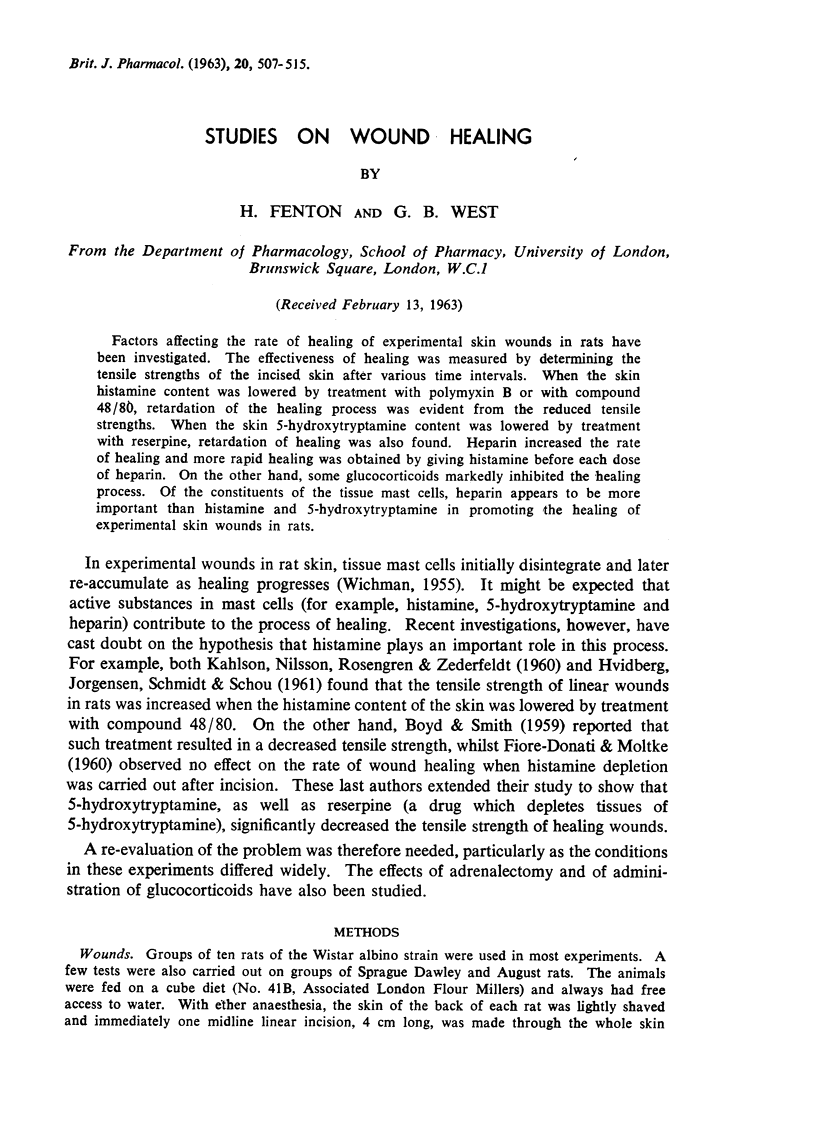
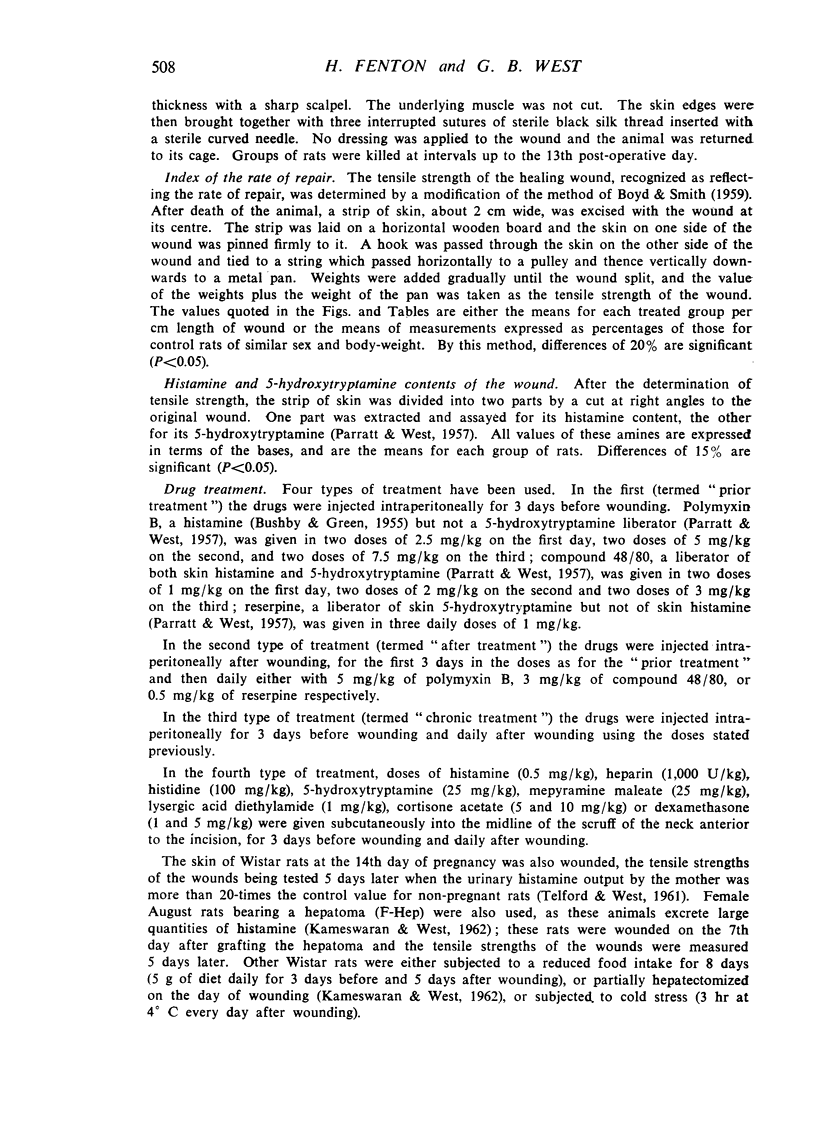
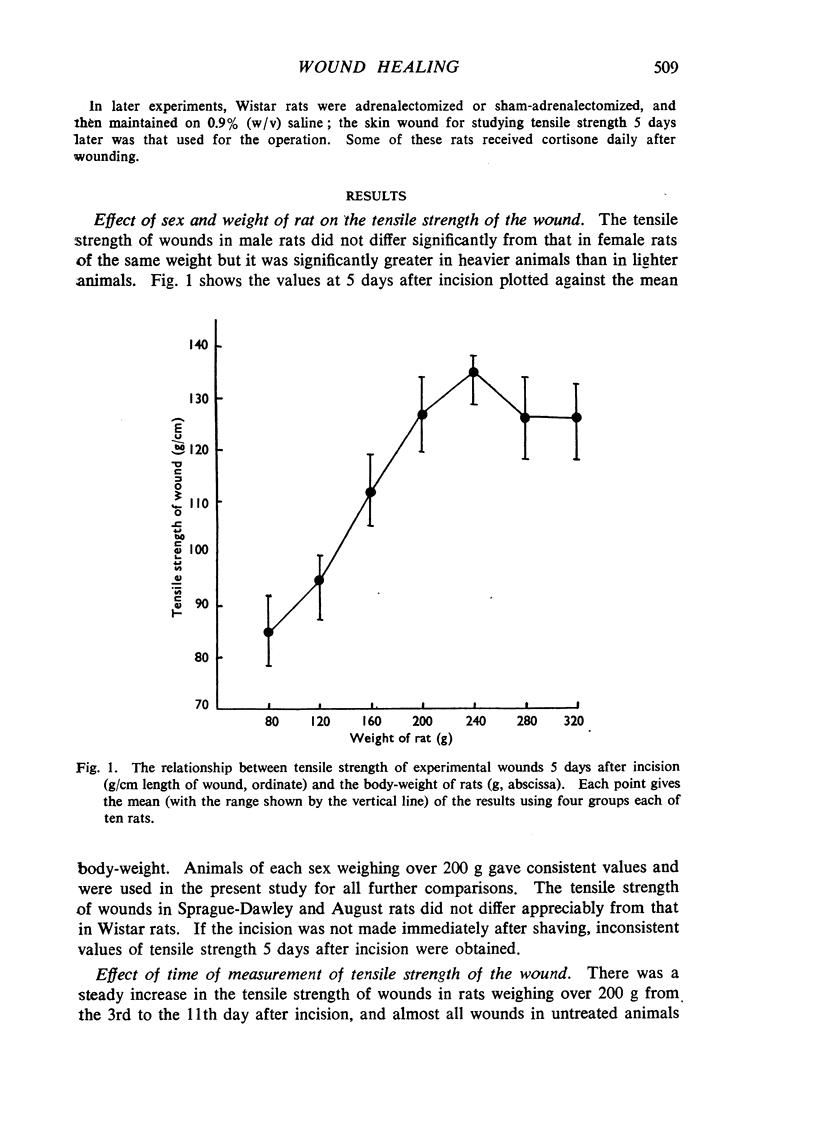
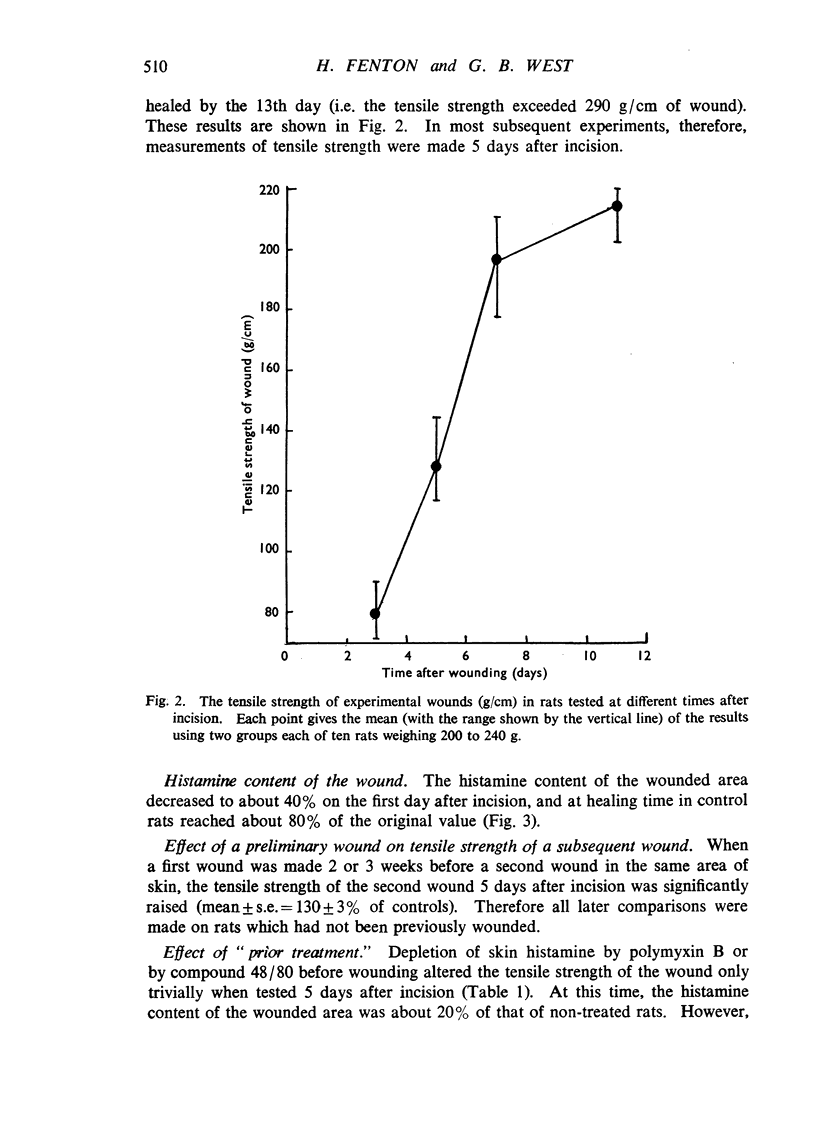

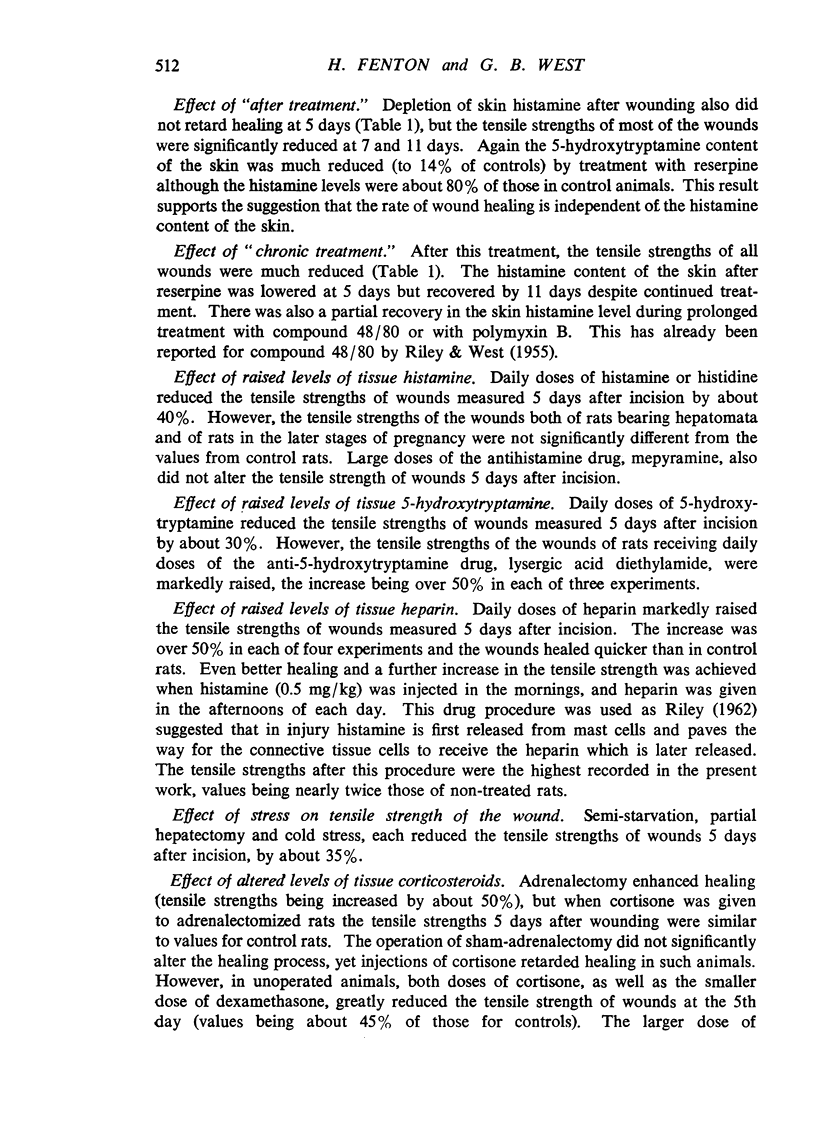
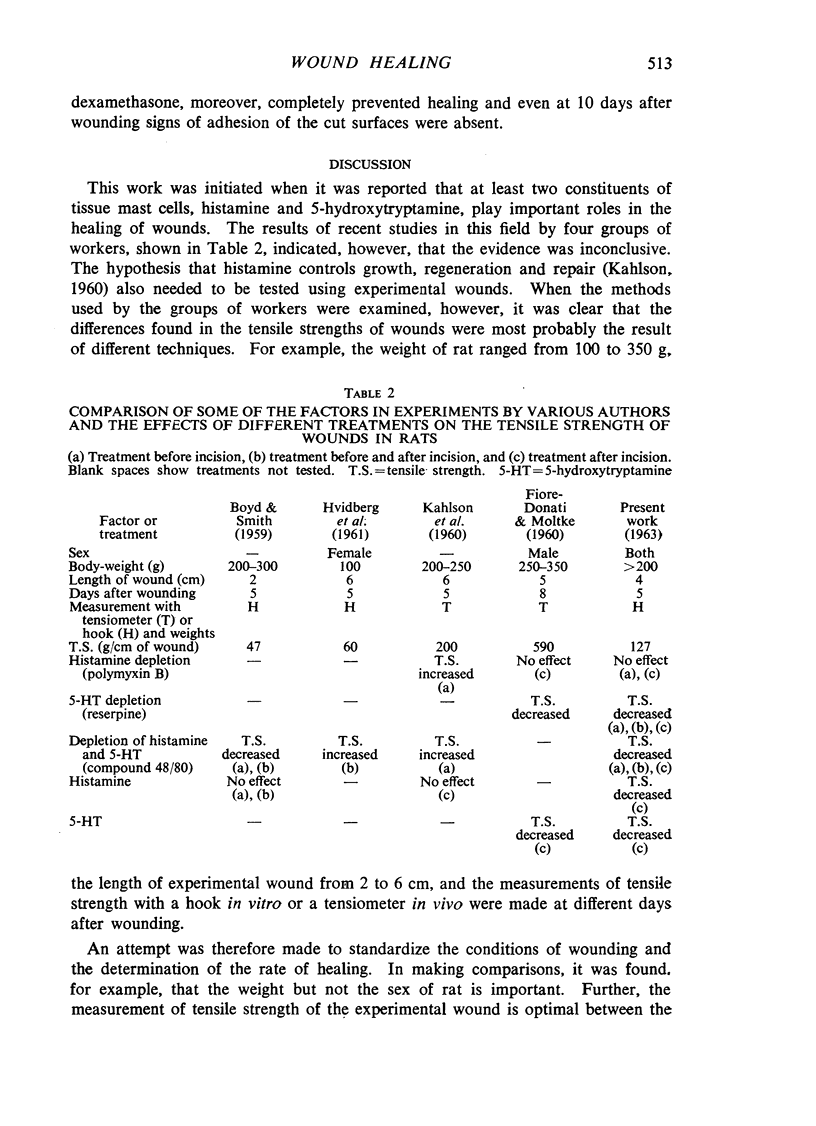
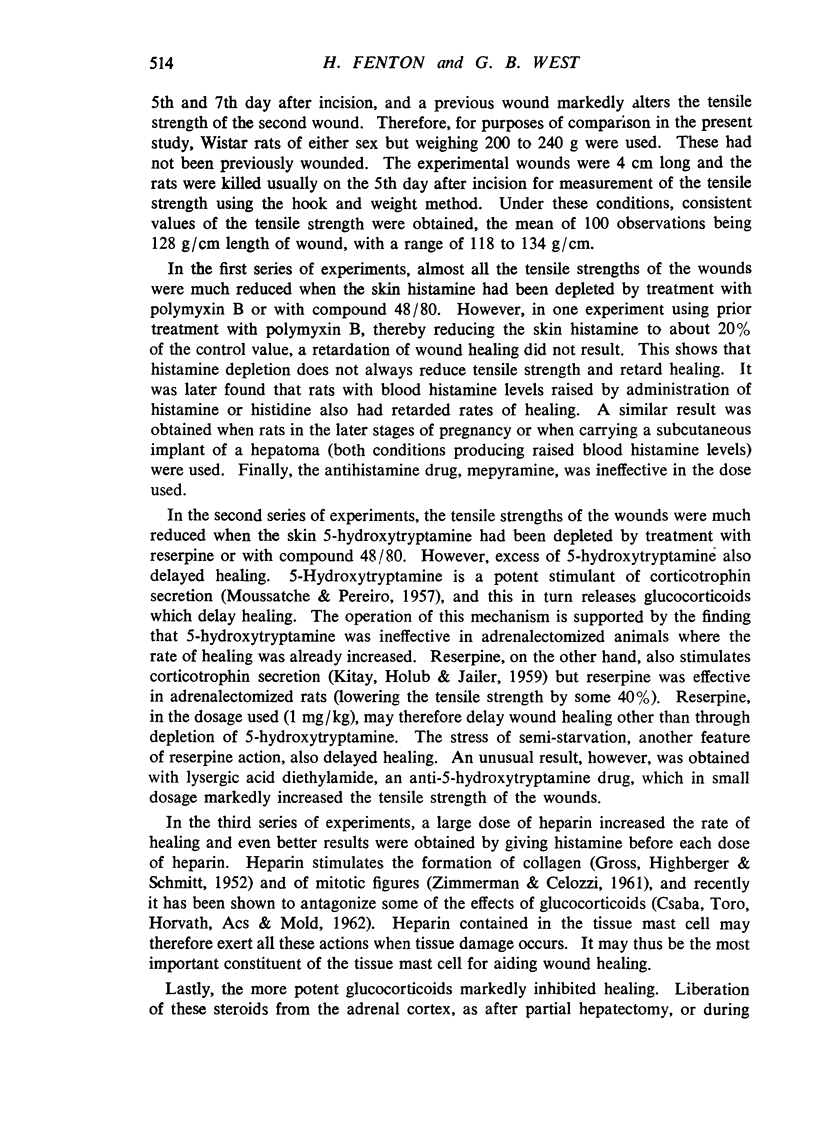
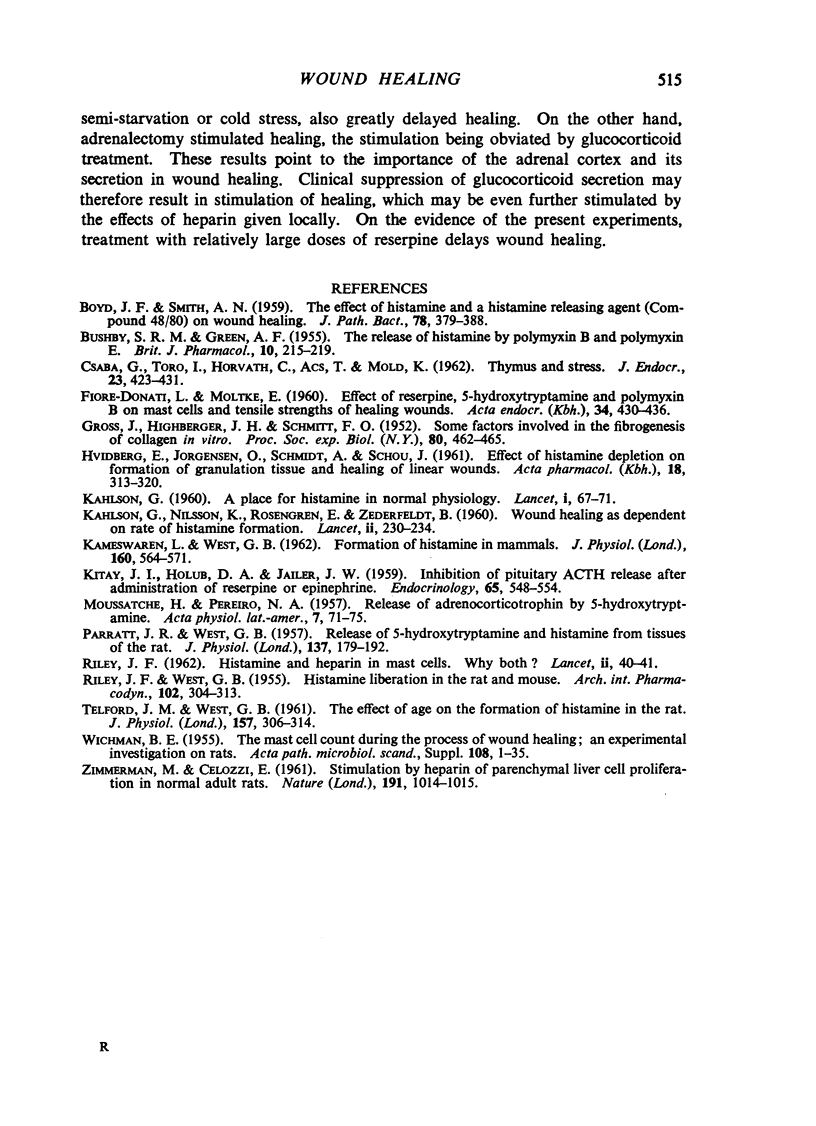
Selected References
These references are in PubMed. This may not be the complete list of references from this article.
- BOYD J. F., SMITH A. N. The effect of histamine and a histamine-releasing agent (compound 48/80) on wound healing. J Pathol Bacteriol. 1959 Oct;78:379–388. doi: 10.1002/path.1700780205. [DOI] [PubMed] [Google Scholar]
- BUSHBY S. R., GREEN A. F. The release or histamine by polymyxin B and polymyxin E. Br J Pharmacol Chemother. 1955 Jun;10(2):215–219. doi: 10.1111/j.1476-5381.1955.tb00085.x. [DOI] [PMC free article] [PubMed] [Google Scholar]
- CSABA G., TORO I., HORVATH C., ACS T., MOLD K. Thymus and stress. J Endocrinol. 1962 Jan;23:423–431. doi: 10.1677/joe.0.0230423. [DOI] [PubMed] [Google Scholar]
- FIORE-DONATI L., MOLTKE E. Effect of reserpine, 5-hydroxytryptamine, and polymyxin B on mast cells and tensile strength of healing wounds. Acta Endocrinol (Copenh) 1960 Jul;34:430–436. doi: 10.1530/acta.0.xxxiv0430. [DOI] [PubMed] [Google Scholar]
- GROSS J., HIGHBERGER J. H., SCHMITT F. O. Some factors involved in the fibrogenesis of collagen in vitro. Proc Soc Exp Biol Med. 1952 Jul;80(3):462–465. doi: 10.3181/00379727-80-19657. [DOI] [PubMed] [Google Scholar]
- HVIDBERG E., JORGENSEN O., SCHMIDT A., SCHOU J. Effect of histamine depletion on formation of granulation tissue and healing of linear wounds. Acta Pharmacol Toxicol (Copenh) 1961;18:313–320. doi: 10.1111/j.1600-0773.1961.tb01673.x. [DOI] [PubMed] [Google Scholar]
- KAHLSON G. A place for histamine in normal physiology. Lancet. 1960 Jan 9;1(7115):67–71. doi: 10.1016/s0140-6736(60)92896-8. [DOI] [PubMed] [Google Scholar]
- KAHLSON G., NILSSON K., ROSENGREN E., ZEDERFELDT B. Wound healing as on rate of histamine formation. Lancet. 1960 Jul 30;2(7144):230–234. doi: 10.1016/s0140-6736(60)91426-4. [DOI] [PubMed] [Google Scholar]
- KAMESWARAN L., WEST G. B. The formation of histamine in mammals. J Physiol. 1962 Mar;160:564–571. doi: 10.1113/jphysiol.1962.sp006866. [DOI] [PMC free article] [PubMed] [Google Scholar]
- KITAY J. I., HOLUB D. A., JAILER J. W. "Inhibition" of pituitary ACTH release after administration of reserpine or epinephrine. Endocrinology. 1959 Oct;65:548–554. doi: 10.1210/endo-65-4-548. [DOI] [PubMed] [Google Scholar]
- MOUSSATCHE H., PEREIRA N. A. Release of adrenocorticotrophin by 5-hydroxytryptamine. Acta Physiol Lat Am. 1957;7(2):71–75. [PubMed] [Google Scholar]
- PARRATT J. R., WEST G. B. Release of 5-hydroxytryptamine and histamine from tissues of the rat. J Physiol. 1957 Jul 11;137(2):179–192. doi: 10.1113/jphysiol.1957.sp005805. [DOI] [PMC free article] [PubMed] [Google Scholar]
- RILEY J. F. Histamine and heparin in mast-cells. Why both? Lancet. 1962 Jul 7;2(7245):40–41. doi: 10.1016/s0140-6736(62)92949-5. [DOI] [PubMed] [Google Scholar]
- RILEY J. F., WEST G. B. Histamine liberation in the rat and mouse. Arch Int Pharmacodyn Ther. 1955 Jul 1;102(3):304–313. [PubMed] [Google Scholar]
- TELFORD J. M., WEST G. B. The effect of age on the formation of histamine in the rat. J Physiol. 1961 Jul;157:306–314. doi: 10.1113/jphysiol.1961.sp006723. [DOI] [PMC free article] [PubMed] [Google Scholar]
- ZIMMERMAN M., CELOZZI E. Stimulation by heparin of parenchymal liver cell proliferation in normal adult rats. Nature. 1961 Sep 2;191:1014–1015. doi: 10.1038/1911014a0. [DOI] [PubMed] [Google Scholar]


